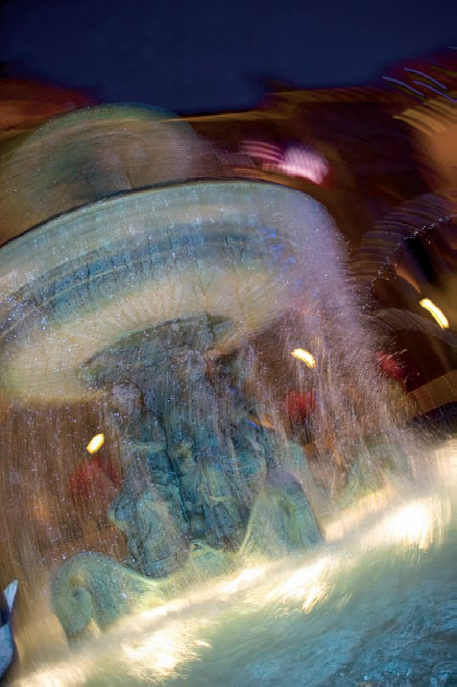Chapter 3. Flash Photography Fundamentals
In this chapter, you learn the basic properties of flash photography. Most of these properties aren't specific to Nikon Speedlights, but can be applied to almost all photography that is done with a flash, whether you're using CLS or a studio strobe.
While using a flash, especially manually, may seem daunting at first, once you get a little bit of knowledge about how it works you will quickly learn that the Speedlight is one of the best tools available to you and that there lots of cool tricks you can use to make improvements to your images.

Using your Speedlight at night can add dramatic flare to your images.
Understanding Flash Exposure
In the past, flash photography was often only done by professionals. There were no TTL meters to control the flash output for you and determining the proper settings required using arcane mathematical equations and expensive flash meters. You also had to get the film processed before you could see if the calculations were correct. This was a major deterrent and kept most amateur photographers away from flash photography thinking it was too expensive and difficult to master.
The stigma flash photography received in those early years is why at first most people find flash photography a mysterious and scary thing. In recent years, people have been finding that flash photography isn't quite as scary as it used to be. ...
Get Nikon® Creative Lighting System: Digital Field Guide, Second Edition now with the O’Reilly learning platform.
O’Reilly members experience books, live events, courses curated by job role, and more from O’Reilly and nearly 200 top publishers.

